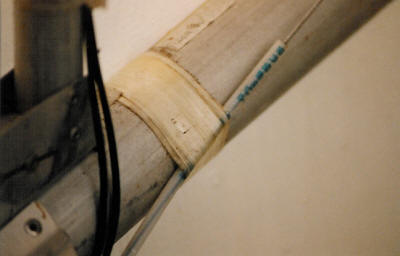|
AIRCRAFT; Quad City Challenger 2
All ultralight aircraft using cables to operate a control system.
INCIDENT REPORT:
The time is 7:30 in the morning in early November, the temperature on
the ground is below zero, an instructor arrives at his training field along with two
students to do some flying. The two place Challenger is untied, fueled, preflighted, and
started. The engine is not running right so the instructor changes plugs, but finds that
the engine will only run if it is primed.
Believing the problem to be fuel related the instructor pulls the carburetors off,
removes the bowls to find the bottom of the carburetor where the main jet is located, has
ice frozen into it. Although the aircraft had been flown several days previous, it had
rained, snowed, thawed and rained some more in the interim. The instructor thawed out the
carburetors, installed new spark plugs, drain and installed new fuel which contained gas line
anti-freeze, then gave the engine a good run up, and gave the plane a
20 minute test flight.
The student was then instructed to put on his helmet and radio, taxi the aircraft out
onto the run way, then take it off do a circuit at 500 feet
flying the length of the runway which was approximately a mile, and land
the plane. Several landings were done quite satisfactorily and the instructor then
instructed the student to climb to an altitude of 1,000 feet where he was going to
instruct the student to shut the engine off and do a dead stick landing.
The student flew the length of the runway just over 5,000
feet and began a turn at
approximately 900 feet, the turn kept getting steeper and steeper, the instructor giving
instructions to apply aileron to bring the low wing up, still the plane continued into a
spiral dive, with engine power still on, the instructor gave instruction to turn the
engine off, and apply rudder, aileron, and elevator, to level the plane, the student was
able to get the plane out of the dive, by pulling back on the stick, but in so doing
stalled the aircraft with a nose high attitude, in a steep turn. The plane stalled, dove
straight towards the ground, and was ready to tuck under and become inverted. The
instructor screamed into his radio for the student to apply opposite rudder and aileron
and to pull back on the stick, as the plane was doing approximately 80 mph, and was now
less than 150 feet in the air.
The student at the point that the plane was ready to become inverted pulled back on the
stick leveled the plane, and the instructor talked him into a landing into a plowed field,
with one wing still flying low, as if side slipping, and the plane turning.
Rushing to the aircraft, the instructor and second student found a student who although quite flustered,
was not injured. The first question that was asked was what went wrong? The student
indicated that he had no aileron control! The instructor then went up and tried to move
the stick, to no avail. The ailerons control system was locked solid.
What had happened
was that some water from rain, condensation, or melting snow had entered the plastic guide
tube, used to route the aileron cables to the bell crank.
This water then froze solid, with the colder temperatures at altitude and
the wind chill factor. Locking the cable and guide together causing the
ailerons to lock up, when the student entered his turn he had no way of bringing the wing
back up since this was a flat winged aircraft, with very little dihedral, and the rudder
was unable to level the wings.
This was the first time in over 4 years of using this type of aircraft for training
that this had happened. One other note, half an hour later, about the time that someone
would have shown up to investigate the accident had there been any injuries, or structural
damage, the control system worked fine, the small droplets in the tubes had melted. Had an
investigator been looking for a problem it is very unlikely he would have found it.
Suggestions:
To any ultralight pilot flying I would advise that you check your control system
carefully if it is using cables routed through plastic guides or outer cable sleeves, and
would find some way of putting a hole at the lowest point in the line so that water has a
way to escape, and also find some way of installing lock deicer of some other means of
preventing the inner and outer cables from freezing together.
Keep the plane hangared and or completely covered.
For more information check out -
Troubleshooting
the Challenger |



